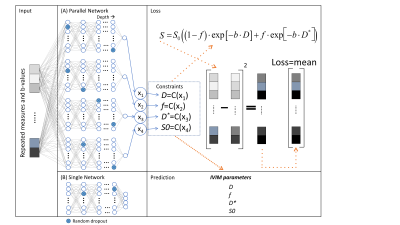Misha P. T. Kaandorp1,2,3, Sebastiano Barbieri4, Remy Klaassen5, Hanneke W.M. van Laarhoven5, Hans Crezee6, Peter T. While2,3, Aart J. Nederveen1, and Oliver J. Gurney-Champion1
1Department of Radiology and Nuclear Medicine, Amsterdam UMC, Amsterdam, Netherlands, 2Department of Radiology and Nuclear Medicine, St. Olav's University Hospital, Trondheim, Norway, 3Department of Circulation and Medical Imaging, NTNU: Norwegian University of Science and Technology, Trondheim, Norway, 4Centre for Big Data Research in Health, UNSW, Sydney, Australia, 5Department of Medical Oncology, Amsterdam UMC, Amsterdam, Netherlands, 6Department of Radiation Oncology, Amsterdam UMC, Amsterdam, Netherlands
1Department of Radiology and Nuclear Medicine, Amsterdam UMC, Amsterdam, Netherlands, 2Department of Radiology and Nuclear Medicine, St. Olav's University Hospital, Trondheim, Norway, 3Department of Circulation and Medical Imaging, NTNU: Norwegian University of Science and Technology, Trondheim, Norway, 4Centre for Big Data Research in Health, UNSW, Sydney, Australia, 5Department of Medical Oncology, Amsterdam UMC, Amsterdam, Netherlands, 6Department of Radiation Oncology, Amsterdam UMC, Amsterdam, Netherlands
We implemented
an improved physics-informed deep neural network approach for IVIM fitting. In
simulations, our method outperformed state-of-the-art fitting approaches, and
in patients with pancreatic cancer, it detected the most significant parameter changes during
chemoradiotherapy.

Figure 3:
IVIM parameter maps (D, f,
D*) of the least-squares, Bayesian and IVIM-NEToptim
approaches to IVIM fitting of a PDAC patient before receiving CRT. The red ROI
represents the PDAC. The least-squares and Bayesian approaches appear noisy,
whereas IVIM-NEToptim shows less noisy and more detailed parameter
maps.

Figure 1:
Representation of the PI-DNN with different hyperparameter options. Here, the input signal,
consisting of the measured DWI signal, is fed forward either through (A) a
parallel network design or (B) the original single fully-connected network
design. The blue crossed circles indicate random dropout. The output layer is
constrained with either absolute or sigmoid activation functions. Subsequently,
the network predicts the IVIM signal which is used to compute the loss
function.
